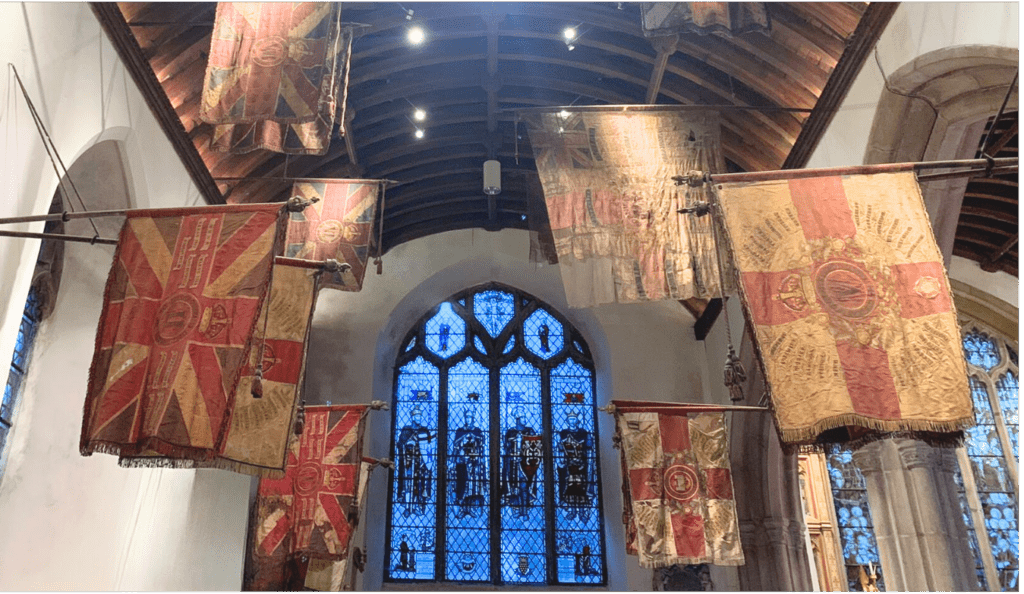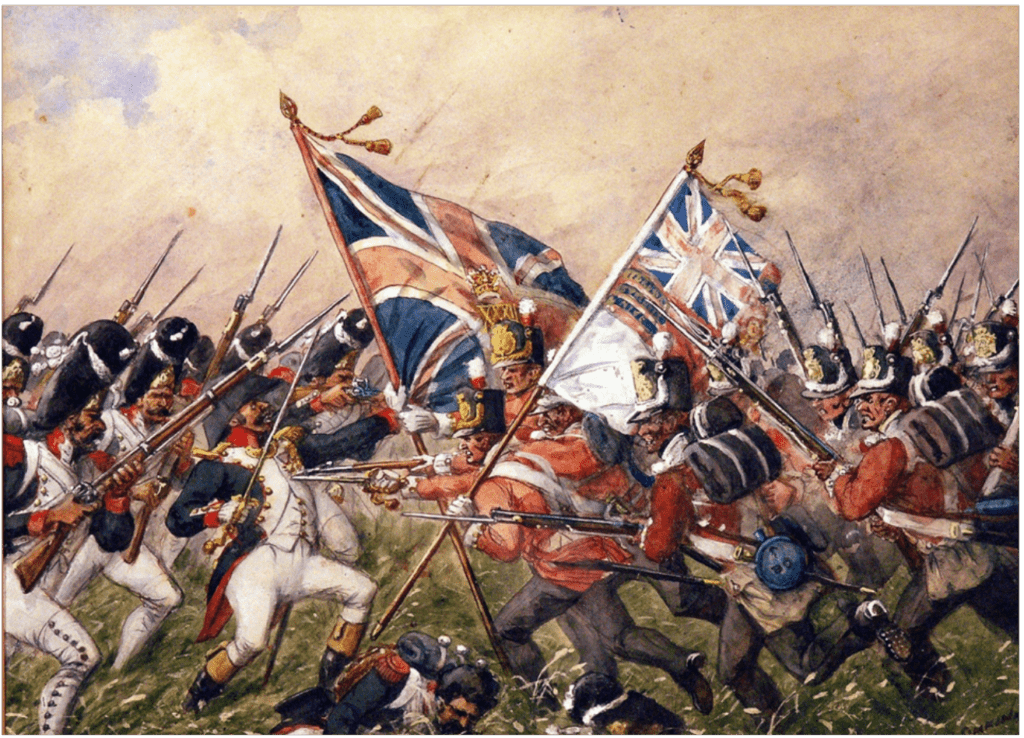‘Remember that this is no common flag which I am committing to your keeping… It is the emblem of duty; the outward sign of your allegiance to God, your Sovereign, and Country; to be looked up to, to be venerated, and to be passed down untarnished by succeeding generations.’ – George V presenting the Colours to the 1st Battalion Durham Light Infantry in Delhi in 1911.
Large Flags known as Colours were carried by soldiers to war until 1881. They acted as a rallying point amongst the gunpowder smoke of battle so that soldiers could easily spot their unit. They are now kept for ceremonial use. Here at Bodmin Keep, you can see Colours dating from the 1790s to the 1990s. Others can be found in St Petroc’s Church in Bodmin, following the tradition of ‘burying’ old Colours in churches.

Units usually have two Colours: the King’s/Queen’s Colour, normally a union flag with the Regiment’s insignia in the centre, and the Regimental Colour, which is a flag of a single colour with the Regiment’s insignia in the centre. Handmade from precious silks, silver and gilt threads, the Colours are used on the Regiment’s most important occasions. They carry the history of the Regiment in the form of battle honours – the names of battles that the regiment has fought in throughout its history. It is thought they carry the spirits of all those soldiers who fought and died in their name since the founding of the regiment.
As the focus of regimental pride, the honour of carrying the Colours falls to the youngest officer in the Regiment, who is then called the ‘Ensign’. On parade, the Colours are protected by a small group of soldiers called the ‘Colour Party’. In battle, the Colours were held by Ensigns and protected by Colour Serjeants, both of which still exist as ranks in the British Army today.
The purpose of Colours was to rally and inspire regiments onward to victory. An example of this was the action of Serjeant Bernard McCabe of the 31st Regiment at the Battle of Sobraon against the Sikhs in India on 10 February 1846.

The 31st had suffered severe losses, including both of their Colour-bearing officers. Realising the danger of the situation, McCabe picked up the Regimental Colour and rushed forward into the middle of the battle. Seeing this act of bravery, and their Colour flying above them, the soldiers rallied and successfully took the Sikh positions. McCabe was commissioned (made an officer) as a reward. He later joined the 32nd Regiment (which was to become the Duke of Cornwall’s Light Infantry) and died during the Siege of Lucknow in 1857. His sword can be seen in our Lucknow display.
Not all regiments have Colours. The Duke of Cornwall’s Light Infantry was absorbed into other regiments, which later became part of ‘The Rifles’ – the biggest regiment in today’s modern Army. Instead of carrying Colours, each Rifleman is entrusted with the Battle Honours of the Regiment, wearing a representative selection of Battle Honours on their cross belt and belt badge. In this way, each soldier is the custodian of the Regiment’s history and fighting spirit.

